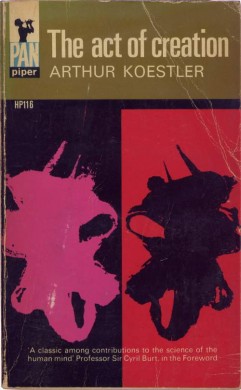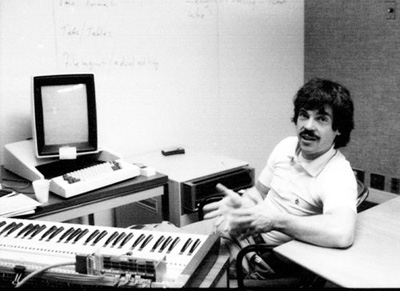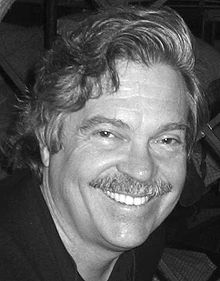Alan is considered one of the great pioneers in the field of computing. He is widely known for a phrase he used in 1971:
The best way to predict the future is to invent it.
Alan is a passionate proponent of people having a wide general education. He often addresses technical audiences by using examples from the arts as well as science.
In the video above, which is from 1995, he talks about Arthur Koestler’s views on creativity.
Alan often uses ideas from other fields to help people make breakthroughs in technology.
This is partly influenced by his background. He was exposed to many different cultures and influences. Here are extracts from a biography written by Scott Gasch. You can find this at:
http://ei.cs.vt.edu/~history/GASCH.KAY.HTML
Although Kay was born in Springfield, Massachusetts his family moved to Australia where he lived for the first few years of his life.
However, the threat of Japanese invasion during World War II prompted his parents to return to the United States.
The gifted youth learned to read by the age of three and was continually pushing his mind and expanding his knowledge as he grew older.
“By the time I got to school, I had already read a couple hundred books. I knew in the first grade that they were lying to me because I had already been exposed to other points of view.
“School is basically about one point of view – the one the teacher has or the textbooks have. They don’t like the idea of having different points of view, so it was a battle. Of course I would pipe up with my five-year-old voice.”
Kay was also exposed to music since his early childhood; his mother was both a musician and an artist.
He was a soprano soloist in his grade school choir and a proficient guitar player as a teenager. Indeed, he was a professional jazz guitarist from 1957-1967.
When, in 1961, he was expelled from Bethany College in West Virginia for protesting, he relied on his musical talents to make a living in Denver playing jazz clubs and giving guitar lessons.
But he found another latent talent when he joined the Air Force and performed well on a computed programming aptitude test. He was sent to work on an IBM 1401 by the U.S. Air Force.
During the 1970s Alan went on to build prototypes for laptops and computers for children. He worked at the famous Xerox PARC labs, Apple, Atari and the Viewpoints Research Institute. Here is Scott Gasch’s view on Alan’s work.
In my opinion, Kay’s most noteworthy contribution to the world of computer science was that of a shifted paradigm; he changed the way both the industry and the world thinks of computers.
Before Kay’s work, a computer was a non-personal box that spat text at you.
If you wanted to interact with this machine you had to learn to speak its language.
Kay, because of his experience with children, his love of education, his diverse interests, and his genius, recognized that users can and should interact with a computer in different ways and should not be limited to only text.
He was among the first to represent objects in a computer as pictures – a metaphor that he further extended by developing the concept of object orientation.
He is, clearly, one of the fathers of the modern PC
You can discover more about Alan’s current work at the Viewpoints Research Institute. Here is an excerpt from its web site.
Viewpoints Research Institute (VRI) is a 501(c)(3) non-profit public benefit organization incorporated in 2001 to improve “powerful ideas education” for the world’s children and to advance the state of systems research and personal computing.
Many of our themes co-evolved with the inventions of networked personal computers, graphical user interfaces and dynamic object-oriented programming.
Design for Learning
We want to help children develop real fluency in many important areas of learning, including thinking, math and science.
Each of these subjects is outside “natural learning” (such as learning to walk and talk).
Quite a bit of time and energy needs to be spent to gain an above threshold fluency.
There are interesting similarities to art, music, and sports, each of which also requires quite a bit of time and energy to gain fluency.
These arts could be termed “hard fun”. Mathematicians and scientists know they are doing art and hard fun as well.
“Thinking” is a higher category than “just” math, science, and the arts.
It represents a synthesis of intuitive and analytical approaches to understanding the world and dealing with it.
Below is an interview from 2008 in which Alan talks about the future of Collective Intelligence.









Leave a Reply